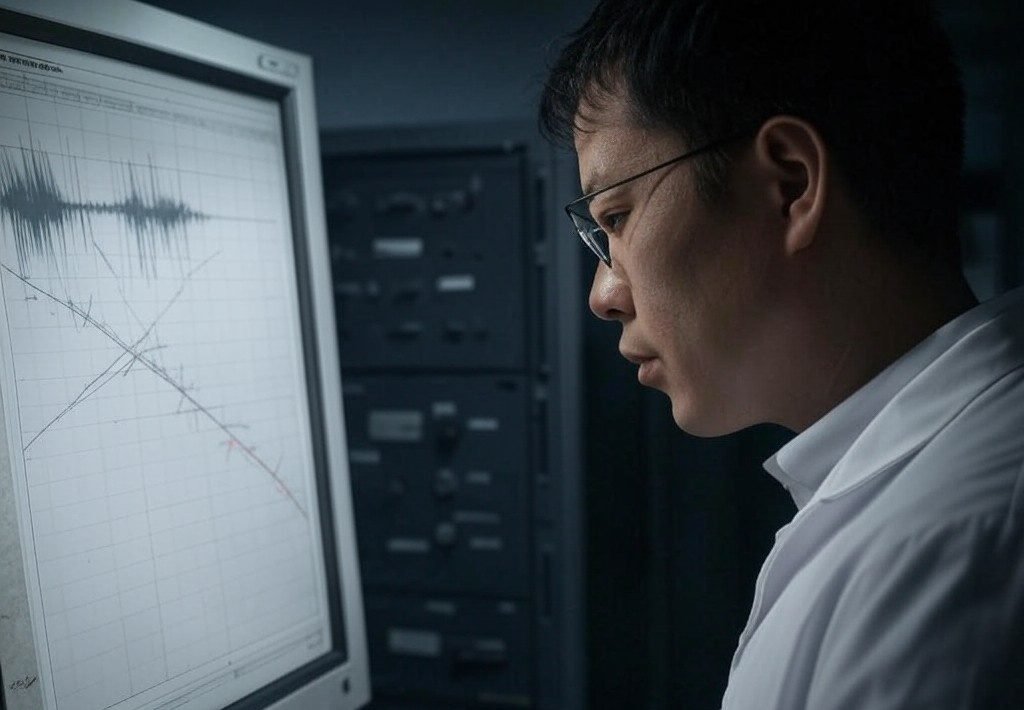Understanding Aseismic Movement: A Key Precursor to Earthquakes
Earthquakes are among the most devastating natural disasters, capable of causing extensive damage to infrastructure and posing significant risks to human life. Recent research has revealed fascinating insights into the mechanisms that precede these seismic events, particularly the concept of aseismic movement—a phenomenon characterized by slow, creeping motion that occurs without the violent shaking typically associated with earthquakes. This article delves into the findings of a recent study that sheds light on this critical phase before fault ruptures and its implications for earthquake prediction.
The Nature of Earthquakes: A Brief Overview
Earthquakes result from the sudden release of energy in the Earth’s crust, predominantly caused by the movement of tectonic plates. As these plates shift, they can become stuck at the interfaces due to friction, which prevents them from sliding past each other smoothly. Over time, stress builds up at these points, leading to potential ruptures. This process is often likened to a coiled spring that eventually snaps, resulting in the seismic waves that we associate with an earthquake.
Research Insights: Aseismic Movement as a Prelude to Rupture
In a groundbreaking study, physicist Jay Fineberg and his colleagues at The Hebrew University of Jerusalem conducted experiments to investigate how the buildup of friction at the interface of materials can lead to sudden ruptures. Their research focused on the dynamics of cracks forming in sheets of plastic, specifically using polymethyl methacrylate, commonly known as plexiglass.
Fineberg noted, “The material composing the contacting plates will not matter. The same physical process will take place in both cases—the explosive spring of the bent plates will release in the same way.” This suggests that the underlying mechanics of fractures observed in laboratory conditions can indeed parallel those occurring in geological fault lines.
The Mechanisms of Aseismic and Seismic Movement
During the initial stages of stress accumulation at a fault line, a precursor phase known as a nucleation front develops. This phase involves the formation of cracks within the material, which move much more slowly than the rapid fractures that characterize an earthquake. Fineberg explains, “The fracture process doesn’t happen all at once. First, a crack needs to be created.” This slow, creeping movement is what researchers refer to as aseismic movement.
In their experiments, the team applied a shear force to the plexiglass sheets, mimicking the conditions found at a strike-slip fault like California’s San Andreas Fault. Initially, the cracks form as a patch within the material’s interface. This patch grows slowly, accumulating energy without releasing it in the form of seismic waves.
Fineberg elaborated, “Eventually, though, the patch expands outside of the brittle zone where the two plates meet. Outside this zone, the energy it takes to break new material no longer grows with the size of the broken region.” Once the crack extends beyond this brittle interface, the excess energy leads to a rapid fracture, resulting in the explosive motion typical of an earthquake.
The Transition from Aseismic to Seismic: Implications for Prediction
The implications of these findings are significant. If scientists can identify signs of aseismic movement in real-world fault lines, it may be possible to predict when an earthquake is likely to occur. Fineberg stated, “Theoretically, if one could measure aseismic movement before a rupture—on a fault line, for example, or even in a mechanical object like an airplane wing—it might be possible to predict a break before it happens.”
While this prediction model is promising, it is complicated by the fact that many fault lines exhibit aseismic creep over long periods without resulting in earthquakes. This ongoing movement can mask the signs of an impending rupture, making prediction more challenging. Research teams are currently exploring methods to detect the transition from aseismic to seismic movement within laboratory settings to gain insights applicable to real-world scenarios.
Fineberg remarked, “In the lab, we can watch this thing unfold and we can listen to the noises that it makes. So maybe we can uncover what you can’t really do in a real fault, because you have no detailed information on what an earthquake is doing until it explodes.” This pioneering approach could pave the way for advancements in seismic monitoring and hazard mitigation strategies.
Broader Implications for Earthquake Preparedness
The insights gained from studying aseismic movement not only enhance our understanding of earthquake mechanics but also inform how communities prepare for and respond to seismic events. Enhanced prediction capabilities could lead to improved early warning systems, allowing for timely evacuations and infrastructure safeguards.
Moreover, understanding the conditions that lead to earthquakes can help engineers design buildings and infrastructure that are more resilient to seismic activity. As more research is conducted in this area, the potential for reducing the impact of future earthquakes becomes increasingly feasible.
Conclusion
The study of aseismic movement provides a critical lens through which we can better comprehend the complex processes that lead to earthquakes. By unraveling the physics behind these phenomena, researchers like Jay Fineberg are not only advancing scientific knowledge but also contributing to the development of predictive models that could save lives and property. As we continue to explore the nuances of fault dynamics, the hope for more effective earthquake preparedness and risk mitigation becomes a tangible reality.




